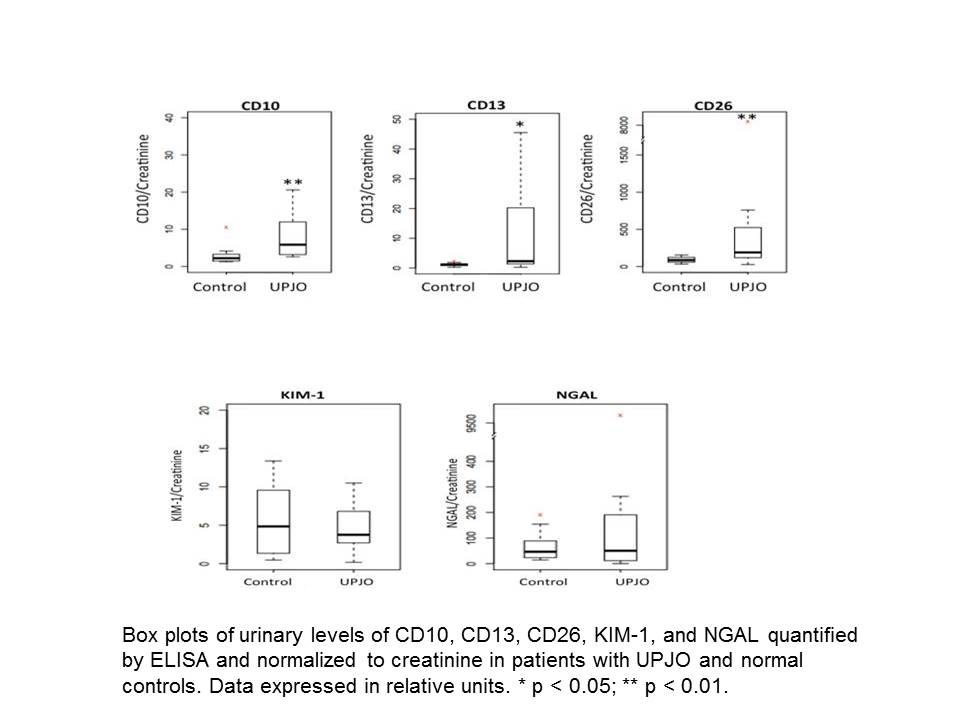|
Back to 2015 Joint Annual Meeting
Urinary Levels of Proximal Tubule Proteins are Significantly Elevated in the Setting of Ureteropelvic Junction Obstruction and May Represent Novel Biomarkers
Miriam Harel1, Claire Gerber2, Miranda L Lynch2, Linda H Shapiro1, Fernando A Ferrer1
1University of Connecticut Health Center/Connecticut Children's Medical Center, Farmington/Hartford, CT;2University of Connecticut Health Center, Farmington, CT
Introduction:
Urinary biomarkers have the potential to aid in the diagnosis and management of ureteropelvic junction obstruction (UPJO).Shedding of proximal tubule brush border proteins occurs early in obstructive uropathy.Thus, we hypothesized that urinary levels of the tubular proteins CD10,CD13,and CD26 would be elevated in the setting of UPJO and could represent novel biomarkers.
Materials & Methods:
A murine model of complete unilateral ureteral obstruction was utilized, and urine was harvested from the obstructed renal pelvis and bladder after seven and ten days.Voided urine was also obtained from 12 patients with UPJO and 12 controls.Murine urinary protein levels were determined using western blotting, and human urine was analyzed with ELISA.Protein levels were normalized to urinary creatinine.Human samples were also tested for the published candidate biomarkers KIM-1 and NGAL.
Results:
In the murine model, levels of CD10,CD13,and CD26 were increased in urine from the obstructed renal pelvis compared to bladder urine produced by the unligated kidney at both time points tested.These proteins were also significantly increased in urine from patients with UPJO compared to normal controls.No statistical differences were observed in levels of KIM-1 and NGAL between control and experimental groups.
Conclusions:
Urinary levels of CD10,CD13,and CD26 are significantly elevated in UPJO and may represent novel biomarkers.Further studies are necessary to validate these findings and to determine the correlation of these urinary proteins with renal damage.

Back to 2015 Joint Annual Meeting
|

